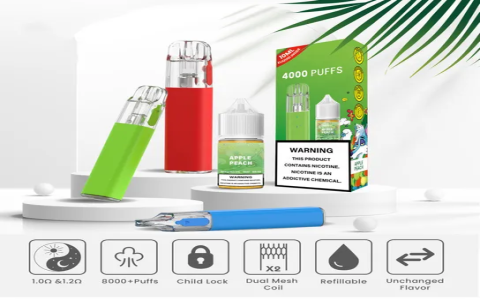Understanding Electronic Cigarette Refills
Electronic cigarette refills are the substances used to replenish the vaporizable solution in e-cigarette devices. These refills, commonly known as e-liquids or vape juice, are essential for the functioning of reusable vaping devices, providing the aerosol and nicotine (if present) that users inhale.
Types of E-Cigarette Refills
The primary forms of e-cigarette refills include:

- Bottled E-liquids: These are sold in bottles and are used to manually fill the tanks or reservoirs of open-system vaping devices. They offer a wide variety of flavors, nicotine strengths, and PG/VG ratios.
- Pre-filled Pods/Cartridges: Designed for closed-system devices (pod mods or cig-a-likes), these are single-use units containing e-liquid. They offer convenience and ease of use, as users simply replace the empty pod with a new one.
- Nicotine Shots/Boosters: These are concentrated, unflavored nicotine solutions (typically in a PG or VG base) designed to be added to nicotine-free e-liquids (often called shortfills) to achieve the desired nicotine strength.
Key Components of E-Liquids
E-liquids typically consist of several main ingredients:
- Propylene Glycol (PG): A carrier for flavor and nicotine, known for providing a stronger “throat hit,” which can be similar to that of traditional smoking.
- Vegetable Glycerin (VG): A thicker liquid that produces more vapor. Higher VG blends are often smoother and result in denser clouds.
- Nicotine: Available in various concentrations, typically measured in milligrams per milliliter (mg/mL). Nicotine can be in freebase form or as nicotine salts, the latter often providing a smoother inhale at higher concentrations.
- Flavorings: Food-grade flavorings are used to create a vast array of taste profiles, ranging from tobacco and menthol to fruit, dessert, and beverage options.
Choosing the Right Refill
Selecting an appropriate e-cigarette refill involves considering several factors:
- Device Compatibility: Ensure the refill type (bottled e-liquid or specific pod/cartridge) is compatible with your vaping device. Open-system devices offer more flexibility with bottled e-liquids, while closed-system devices require proprietary pods.
- Nicotine Strength: This should align with individual preferences and, if applicable, previous smoking habits. Options range from nicotine-free (0mg/mL) to high concentrations.
- PG/VG Ratio: The ratio of Propylene Glycol to Vegetable Glycerin affects throat hit, vapor production, and e-liquid viscosity. A balanced ratio (e.g., 50/50 PG/VG) is common, while higher VG is preferred for larger vapor clouds and sub-ohm vaping, and higher PG for a more pronounced throat hit.
- Flavor Profile: Personal preference dictates flavor choice. Experimentation is often necessary to find preferred tastes.
Safe Handling and Storage
Proper handling and storage of e-cigarette refills are crucial for safety and product integrity:
- Keep Away from Children and Pets: Nicotine is a toxic substance if ingested. Always store e-liquids and refills out of reach and sight of children and pets, preferably in child-resistant containers.
- Storage Conditions: Store e-liquids in a cool, dark place away from direct sunlight and excessive heat to preserve their quality and prevent the degradation of nicotine and flavorings.
- Avoid Skin and Eye Contact: In case of accidental spillage on skin, wash the affected area thoroughly with soap and water. If e-liquid comes into contact with eyes, rinse immediately with copious amounts of water and seek medical advice if irritation persists.










